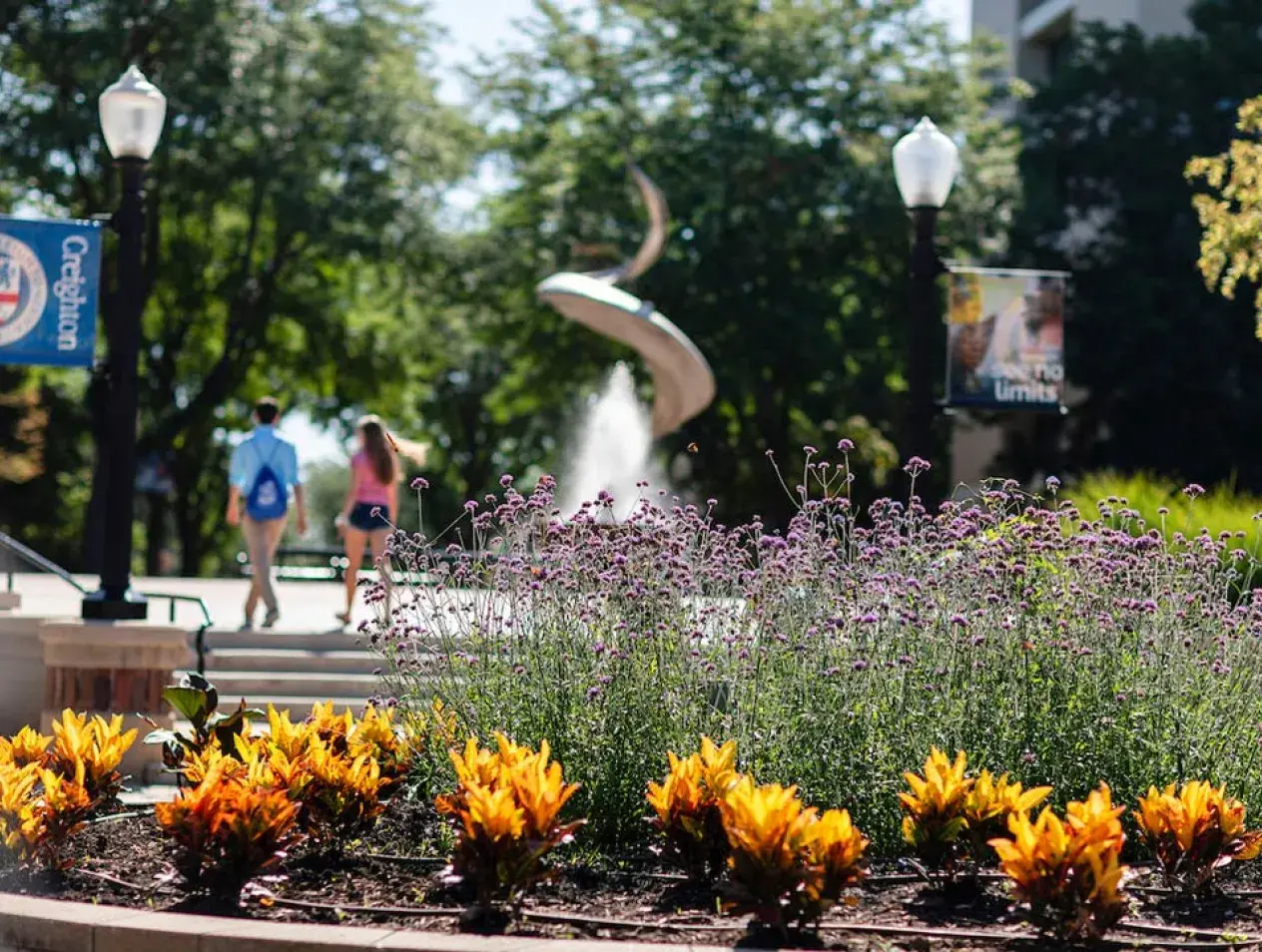
2022 Symposium
34th Annual Symposium on Jewish Civilization
Chronicling Jews and Crime: From Law-Makers to Law-Breakers
Sunday, October 23 - Monday, October 24, 2022
Co-hosted by
- The Klutznick Chair in Jewish Civilization, Creighton University
- The Kripke Center for the Study of Religion and Society, Creighton University
- The Harris Center for Judaic Studies, University of Nebraska-Lincoln
- The Natan and Hannah Schwalb Center for Israel & Jewish Studies, University of Nebraska at Omaha
- The Jewish Federation of Omaha
Symposium Information
For further information about any Symposium activity, please contact Prof. Leonard Greenspoon ljgrn@creighton.edu or 402.280.2304.
Symposium activities will take place Sunday on the campus of the University of Nebraska at Omaha , at the Omaha Jewish Community Center Staenberg Kooper Fellman Campus, and in Beth El Synagogue. Monday’s activities are scheduled for the Creighton University campus.
Abstracts
Jesse Abelman
Curator of Hebraica and Judaica, Museum of the Bible, Washington DC
“Legal Autonomy, Violent Crime, and Informing to Gentile Courts in High Medieval Ashkenaz”
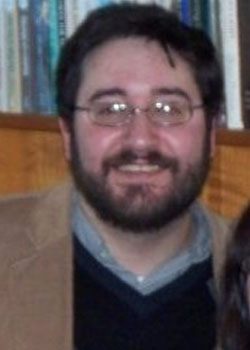
This talk considers violent crime and its regulation within the Jewish communities of Northern France and Germany during the twelfth and thirteenth centuries. Based primarily on Jewish legal sources, it places Jewish courts and the crimes they prosecuted in the context of contemporaneous European institutions. Who regulated Jewish violence and how? The history of medieval Jewish legal institutions has hewed relatively close to the image painted by Guido Kisch in the middle of the twentieth century. Jewish communities received exclusive jurisdiction over their members through charters from a king or another lord who controlled the territory in which they lived. Through the application of the methods of legal anthropology and reception history to Jewish legal sources, especially responsa, I argue that who would adjudicate cases of violent crime in Jewish communities, Jewish courts or Gentile authorities, was a complex question. Jews sometimes took their violent disputes to Gentile courts, sometimes to Jewish courts. Indeed, how best to understand violent crime as a class of offenses is sometimes difficult to pin down, as Jewish authorities sought to maintain control over their communities in the face of the increasing power of secular legal authorities.
Nathan Abrams
Bangor University (Wales)
“Cops and Criminals: Jews in Twenty-First Century Film and Television”
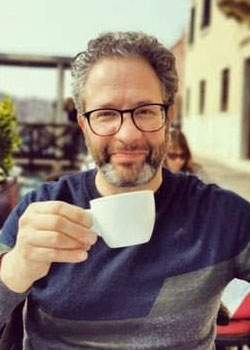
Hayim Nahman Bialik, the famed Hebrew poet, said during the 1920s that the Jews would know that their dream of a nation-state had been fulfilled when there were Jewish prostitutes, Jewish thieves, and a Jewish police force. The world of film and television has realized this dream as it depicts Jews on both sides of the law, both as criminals and crime preventers. Since Jews were historically involved in gangsterism, including Ace Rothstein, Meyer Lansky, Dutch Schultz, and Bugsy Siegel, and, more recently, Bernie Madoff, Harvey Weinstein, and Jeffrey Epstein, they have also long been represented in film, both in terms of feature film and documentary. On the other side of the law, the world of the police is perceived as one that excludes Jews. Back in 1944, German-Jewish philosopher Hannah Arendt wrote of “the traditional Jewish fear of the ‘cop’ – that seeming incarnation of a hostile world.” But that hasn’t stopped their fictional representation on film and television. This paper will provide an illustrated discussion of twenty-first century representations of Jewish criminals and police in a variety of contexts (film and television) and locations.
Kimmy Caplan
Bar-Ilan University
“Revisiting Fraud, Corruption, and Holiness: American Immigrant Orthodox Rabbis and Crime”
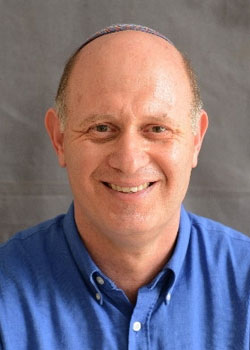
Between 1870-1924 close to thirty million people immigrated from Europe to America, and approximately 10% of them were Jews. Close to 70% of these Jewish immigrants arrived at the shores of New York, and close to 70% of them remained in New York. Consequently, this was by far the largest Jewish community during the mass immigration era and therefore subject to multiple historical studies for decades. The outpour continues.
A few of these studies or any given portion of them are devoted to various manifestations of crime and criminal acts conducted by Jewish immigrants, and the Orthodox immigrants and their rabbis are included in this "hall of fame." Two well-known examples concerning these rabbis that received scholarly attention are their involvement in the kosher poultry business in New York, addressed in Harold Gastwirth's classic Fraud, Corruption, and Holiness published in the mid-1970s, and Hanna Sprecher's study a decade and a half later that focuses on producing and illegally selling alcohol during Prohibition.
Based upon these studies, I suggest relating to additional forms and expressions of crime and criminal acts conducted by immigrant Orthodox rabbis, such as regulating religious divorces without civil registration. Going beyond details and specifics, I offer certain preliminary observations regarding their mindset, awareness, and perceptions of America and some of its legal and other infrastructures and characteristics, most of which were altogether new and foreign to them.
Dan W. Clanton, Jr.
Doane University
“‘Frightfully Decent’: Jews in Golden Age Crime Fiction”
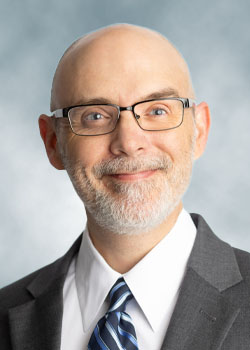
Jews appear regularly in Golden Age crime fiction and are often relegated to pejorative stereotypes. However, some authors, such as Agatha Christie, offered a subtle resistance to this dominant trend. Critical readers of Christie have often characterized her work as cozy and conservative, reifying traditional Victorian and Edwardian values and views by focusing solely on a puzzle plot to be solved. However, more recent appraisals of Christie’s work by Merja Makinen, Jeremy Black, and others highlight how Christie challenged and even subverted those values, ideologies, and social mores. This paper will argue similarly that Christie challenges the normative depiction of Jews in crime fiction through her Hercule Poirot stories. This is not to say that Christie makes no use of stereotypes and/or cringeworthy comments, but by portraying Jews in her Poirot stories as different but not anathema, Christie challenges the common presentation of Jews in Golden Age crime fiction as well as the assumptions of her hegemonic Christian society. My presentation will conclude with a consideration of how cinematic interpretations of Christie’s Poirot stories have dealt with the issue of Jewish representation.
Mara W. Cohen Ioannides
Missouri State University
“Murder-Suicide in the Ozarks: The story of William and Malinda Lowenstein”
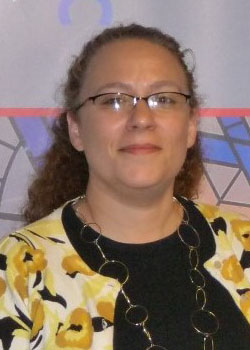
Cases of murder-suicide are rare enough, but in the Jewish community even rarer. In December of 1898, William murdered his wife and then committed suicide. What makes the story even more fascinating is that it became known internationally. William Lowenstein, a German immigrant who fought for the Union during the Civil War, married Malinda Vaughn in Indiana. Then they settled in Jasper County, Missouri, on a farm. Farming is also a rarity among Jews. They had children and farmed and, apparently, fought. This paper examines the circumstances around the final argument between William and Malinda and how it was presented to the public.
Joel Gereboff
Arizona State University
“Yirat Elohim and Yirat Hora’ah: Fear and Other Character Traits of Judges in Biblical and Rabbinic Thought”
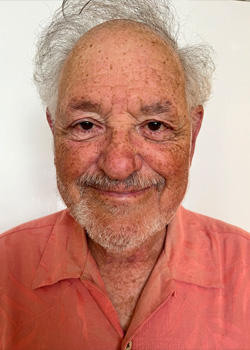
Judges play a central role in addressing criminality and achieving justice in society. Often, however, judges have themselves been corrupt or unqualified to attain these desired goals. Three key passages in the Pentateuch (Exod 18:13-27, Deut 1:13-18, and Deut 16:18-2) describe the need for judges and lay out the qualifications they must have. While the actual administration of justice in ancient Israel is a difficult matter to determine, these passages present an idealized picture of the character traits, dispositions, and values ideal judges ought to possess. The three passages do not delineate identical traits, but among those noted are: not showing favoritism, being wise, trustworthy, capable [anshei Chayil], and fearing of God [yirei Elohim]. The exact meaning of each of these terms requires exploration, and I will briefly address how biblical scholarship understands these characteristics.
The main focus of my paper will be upon early rabbinic, tannaitic and amoraic, discussions of these traits and their relevance to being appointed a judge. One of the traits as noted is being a yirei Elohim. In a recent essay, I traced early rabbinic understanding of this trait, explored whether the term yirah refers to the emotion of fear, and examined how it is manifested in the disposition of a judgement.
A second reference to yirah in early rabbinic texts appears in talmudic discussions of judges: “fear of rendering judgment,” yirat hora’ah. In a recent article, Yuval Sinai compares differences between the understanding of this concern in the Palestinian and Babylonia Talmuds. Among the issues he examines is how fear of rendering an erroneous decision may be invoked by a judge. My paper seeks to contribute to rabbinic and other religious discussions of the place of emotions in the character and actions of judges and the judicial process in combatting criminality.
Chaya Halberstam
King’s University College at the University of Western Ontario
“Interrogating Witness Interrogation in Susanna and the Mishnah”
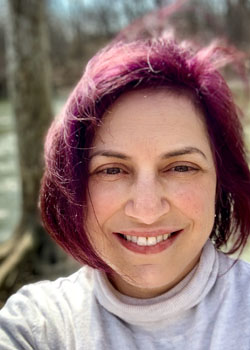
Examining witnesses thoroughly--going above and beyond the required investigations--is praised in the Mishnah: an esteemed figure, R. Yohanan b. Zakai, is reported to ask witnesses about the “stems of figs” -- a seemingly irrelevant and impossible question likely designed specifically to give a judge leeway to invalidate witness testimony.
The story of Susanna, an addition to the book of Daniel from the Second Temple era, has been understood to contain an intertextual reference to Ben Zakai’s judicial practice. In this story, Susanna, a Jewish woman, is falsely accused of adultery after she refuses to succumb to the harassment of two town elders. Daniel, seemingly out of nowhere, interrogates the elders about the type of tree they saw, which parallels the botanical image in Ben Zakai’s examination of witnesses. The elders’ testimonies are revealed to contradict each other when they each name a different type of tree, and Susanna is exonerated while the elders are killed for conspiring against her.
The link between these two sources is about more than trees, however. Both highlight witness interrogation that centers on patriarchal protection of the vulnerable (in the case of Susanna, a vulnerable woman who has been sexually harassed by esteemed members of her own community). In this talk, I draw on feminist scholars on Susanna who see her remain silenced and objectified throughout the story. I then turn to the Talmud (b. Ket 12a) and contemporary events in the #metoo era, asking whether this mode of intensive interrogation protects the vulnerable or, rather, undercuts them by putting skepticism and disbelief at the center of the legal system. An alternate approach – also found in the Talmud – would grant women the authority to speak for themselves and to be believed.
Elena Hoffenberg
University of Chicago
“Between Social Scientific Objectivity and Jewish Political Subjectivity: Liebmann Hersch’s Analysis of Jewish Criminality in Poland”
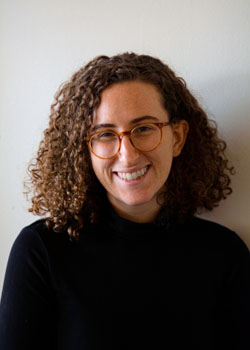
When the Geneva-based demographer Liebmann Hersch began his study of Jewish criminality in Poland in the early 1930s, he sought to leverage his stature in the international field of statistics to conduct a study that also reflected his personal convictions. Although Hersch worked closely with the YIVO Institute for Jewish Research during this period and was invested in contributing to the institute’s project of serving Eastern European Jewry by publishing scholarship in Yiddish, Hersch’s correspondence from the period of his study on criminality reflects his prioritization of another purpose of this research, namely, the ability to reach non-Jewish audiences through English, French, and Polish to correct the misconceptions about Polish Jews that served as the foundation of prejudicial attitudes and discriminatory policies. By tracing the history of the creation, publication, and translation of Hersch’s comparison of the rates of crime between Jews and non-Jews in Poland, this paper offers insight into the political stakes of research on Jewish criminality in the interwar period.
Motti Imbari
University of North Carolina Pembroke
“How did Settlers’ Rabbis respond to Violence and Incitement? The Case of the Massacre in the Tomb of the Patriarchs in Hebron (1994) and the Assassination of Israeli Prime Minister Yitzhak Rabin (1995)”
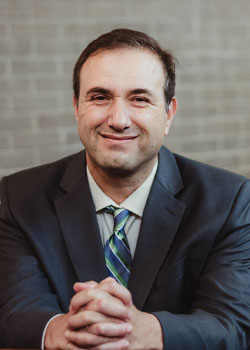
During more than four decades of occupation, a number of settlers and their supporters have engaged in political violence. In this paper, I will examine the response of the religious authorities of the ideological settlers to such acts. The discussion will focus on two incidents: the massacre in the Tomb of the Patriarchs in Hebron (1994) by Baruch Goldstein, a Jewish physician from the settlement of Kiryat Arba (just outside Hebron) who murdered 29 Muslim worshippers in the Tomb of the Patriarch; and the assassination of Israeli Prime Minister Yitzhak Rabin (1995) by Yigal Amir, who believed that the Oslo accords threatened the existence of the State of Israel and hoped that by murdering Rabin, he would prevent their implementation.
An examination of the attitude of religious leaders to these developments produces a complex picture. Though they generally refrained from supporting violence, they were sometimes reluctant to condemn it. In some cases, they showed a tendency to shift the blame to the victims – the Arab public or those responsible for setting official Israeli policy.
Menachem Keren-Kratz
Independent Scholar, Israel
“Ideologically Justified Violence Among Israel’s Ultra-Orthodox Society”
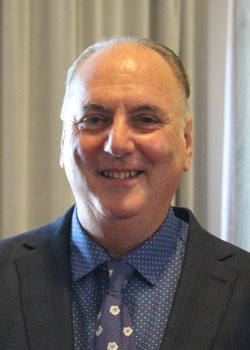
In recent decades the Israeli press has occasionally reported on various sorts of violent acts taken by Ultra-Orthodox Jews, also known as Haredi, and aimed at other Haredi individuals or groups. These acts range from slandering, discrimination, threatening, and banning to damaging private property, stoning, and even beating and death threats. Unlike regular crimes, the perpetrators of these acts justify their actions by ideological and religious reasons, insisting they are only doing what’s right in God’s or in their rabbi’s eyes.
My lecture reviews the history of ideologically justified violence in Jewish history in general, yet focuses on modern Israel. Based on many examples, I claim that in Israel, particularly since the late twentieth century, the Haredi society has adopted ideologically justified violence as a legitimate tool to enforce its social and religious norms.
Consequently, acts of violence are used against individuals who are accused of breaching the “right” Haredi standards. Children, for example, are expelled from schools because of their parents’ occupational choices or because they don’t obey the Haredi dress code or use non-kosher cellphones. Divorced women are condemned and shunned for “destroying” their families even after being abused or beaten by their husbands. Even rabbis, including those who are considered foremost Haredi leaders, are not spared from such attacks. Violent actions are taken not only against individuals but also against entire groups such as Sephardi Haredim, Hozrim Be-Teshuva [repentant], certain Chasidic groups, or the “Modern Haredim,” who seek academic or advanced technological training or choose to have less than the average number of children.
Victoria Khiterer
Millersville University
“The Queen and King of the Russian Underworld: Son'ka the Golden Hand and Mishka Iaponchik”
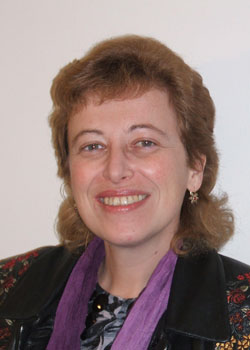
My paper analyzes how the Jewish thieves Son'ka the Golden Hand (Sofia Bliuvshtein, 1846 – 1902) and Mishka Iaponchik (“Mike the Jap,” Moisei Vinnitskii, 1891-1919) became the Queen and King of the Russian underworld. Both originated in the Odessan criminal underworld, but Son’ka committed her crimes in many different places in Russia and abroad, while Mishka’s gang limited its criminal activities to Odessa.
Son’ka and Mishka used different methods for their crimes, which were mainly determined by their genders. Son’ka often used her attractiveness and sexuality to seduce potential victims, usually wealthy men. The crimes of Mishka and his accomplices were more violent: they sometimes killed their victims. Son’ka didn’t show any interest in political and national life, while Mishka attempted to actively participate in it. Mishka participated in a self-defense unit during the 1905 pogrom in Odessa and was a member of an anarchist organization. Iaponchik organized in Odessa an armed Jewish self-defense unit in the fall of 1917. His detachment protected Odessa from Jewish pogroms, but simultaneously expropriated private property “for the needs of the revolution.”
Son’ka and Mishka, despite the differences in their methods, showed many times their ability to trick their victims and escape from the police. These abilities turned them into legends of the criminal underworld. Their colorful figures were described in memoirs, fiction, and depicted in several films.
Joseph E. Kraus
University of Scranton
“Breaking the Frame: The Jewish Gangster Figure’s Defiance of Narrative”
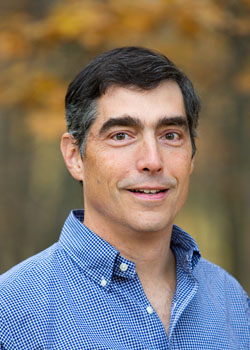
The Italian gangster comes to us as metonymy. Thanks to years of post-Godfather narratives, the generic gangster implies a larger structure of boss/capo/button-man. He is “framed,” that is, by a story that carries across texts as an implicit cultural truism strong enough to bring successive ethnic criminal organizations (particularly African-American or Latinx) as adversaries or allies into the same structure.
The figure of the Jewish gangster falls outside that frame, however. Whether it’s Hyman Roth, the ultimate adversary of the first two Godfather films, Hesh Rabkin, the ablest mentor figure to Tony Soprano, or Winston Wolfe, the canny gangster-ex-machina of Pulp Fiction, Jewish gangsters defy the narrative structure that otherwise organizes the text’s depiction of crime.
In my paper, I trace the origins of that trope, and I argue that the Jewish gangster character challenges two conventional narratives: American organized crime as chiefly an Italian-American phenomenon and Jews as the model ethnic minority. As such, he functions to recall a wide set of historical assumptions and then to question his place within them. He calls on us to see him as anomalous, each time we encounter him, even as successive authors present him in similar fashion. He becomes, in other words, a sign suggesting his own erasure.
Jeffrey A. Marx
Independent Scholar, Los Angeles
“But How do You Make a Flood? Jewish Arsonists at the Turn of the Nineteenth Century”
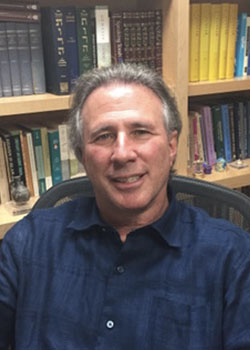
Beginning in the last two decades of the nineteenth century, Jews were portrayed on the vaudeville stage, in novels, and especially in cartoons found in humor journals like Judge, Life, and Puck, as unscrupulous merchants, scheming to enrich themselves by taking out fire insurance policies and then burning down their clothing stores. These depictions continued into the twentieth century on phonograph records and in silent movies, as well.
While such characterizations have been explained by the disproportionate numbers of Jews involved both in the clothing industry and as small-store entrepreneurs; by the unease of nativists threatened by the Jews’ rapid economic rise and concomitant desire to enter into their social realms; and by the Jew as a symbol of the economic and social dislocations wrought during the Gilded Age by urbanization and the rise of corporate structures, the fact is that there were indeed Jewish arsonists. Their exploits and trials were splashed, during this time, on the pages of daily newspapers in large urban centers, as well as in small towns across America.
This presentation will explore the stories of these Jewish arsonists, how they were sensationally portrayed, and what their presentation tells us about both Jews and America at this time.
Yonatan S. Miller
University of Toledo
“Hidden Talents: Examining Tales of Israelite Priestly Corruption”

Mention of the Israelite priesthood in the Jewish tradition generally conjures a positive legacy, if not a warm nostalgia for the bygone days of the Temple in Jerusalem under priestly leadership. Opinions about sacrificial worship may divide the modern denominations of Judaism, but warm attitudes about the priesthood prevail. Yet a body of authoritative traditions from the Hebrew Bible through rabbinic literature maintains that this body was rife with corruption: whether bribery, embezzlement, or asset seizures. Nonetheless, aside from token mentions of the commoditization of the High Priesthood in the late Second Temple period, these sources are largely bracketed (or glossed over) in histories of Judaism.
This paper will proceed on two tracks. First, I will give an overview of some of the major classical sources about priestly corruption and address questions about their historical reliability. Second, I will note trends in the treatment of these sources in modern historiographies of the priesthood. By highlighting the motif of priestly corruption, I hope to bring some clarity to our perceptions about the priestly past, which are often distorted by both ancient and modern theological agendas.
Motti Zalkin
Ben Gurion University
“Between Odessa and Vilna – Jewish Organized Crime as a Social Phenomenon”

Classical historiography, as well as Jewish common memory, has refrained from mentioning one of the phenomena prevalent in the pre-Holocaust Jewish communities in Eastern Europe, which is organized Jewish crime. The few expressions of this phenomenon in the literature, such as Benia Krik [Mishka Yaponchik], the protagonist of Isaac Babel's book Odessa Tales, were perceived as representing a marginal phenomenon and not a prevalent reality. However, the documentation found in the archives after the collapse of the Soviet Union revealed a wide system of active and "colorful" Jewish criminal organizations, which engaged in a wide range of non-normative activities, from theft and extortion to prostitution, kidnapping, and even murder. In some cities, these Jewish criminal organizations took complete control of the local underworld, when, to a large extent, they were active players in the design of the normative local Jewish living space. The above-mentioned documentation also points to a direct link between this organized crime and the development of Jewish crime in North America. In my lecture I will illustrate this phenomenon by presenting and examining two Jewish criminal organizations, "Agudat Akhim" [Brothers Association] and "Degel HaZahav" [The Golden Flag], which operated in Vilna, the "City of Torah"; their scope and involvement in local Jewish life, their internal organizational structure; how they were perceived in normative Jewish society, and the ways in which their activities were covered and represented in the contemporary media and theatre.

